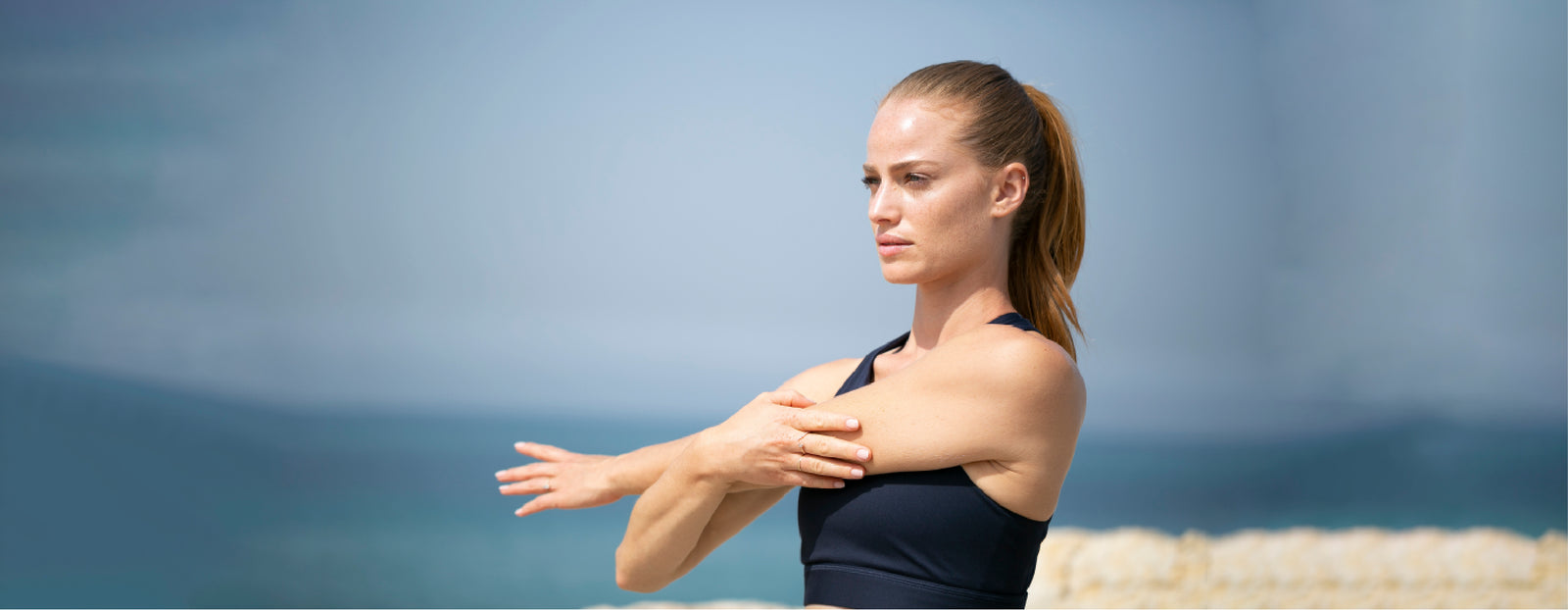

A good sweaty workout or run can really boost your energy. It’s also a great way to improve your mood. The downside is that sweat, combined with dirt, grime and other environmental factors, can make you breakout. Read on to find out why sweat pimples happen and what to do about them.
Contents
Sweat pimples, medically known as acne mechanica, are irritated red or pink bumps on the skin. They tend to form in areas of the body where sports equipment or clothing rubs against your heated skin, such as your forehead, back and chest. Sweat pimples also can form where sweat tends to collect, such as under your breasts, armpits and in skin folds. Typically, sweat pimples clear more quickly than regular acne, within six to eight weeks of treatment.
Sweat alone doesn't cause pimples; it is the buildup of dirt, oil and bacteria on your skin that can cause pimples. When you sweat, the sweat moves through your pores and gets onto your skin. Sweat then evaporates on the skin and cools down the body. This mechanism is also how the body flushes out toxins.
Problems begin when there is dirt and bacteria on your skin. Bacteria thrives in warm, moist conditions and if the sweat is not washed away, bacteria quickly multiplies. As bacteria and other impurities accumulate on your skin, they start to block your pores. Sweat cannot get through clogged pores, causing the follicles to swell and sweat pimples to form.

First, the causes are different. While sweat pimples are caused by sweat, bacteria and blocked pores, regular acne is caused by hormonal fluctuations and genetics. Second, the appearance of these skin irritations is different. Sweat pimples are irritated red or pink bumps, and regular acne appears as blackheads, whiteheads, and papules.
Gently cleansing the affected area after sweating heavily and at the end of the day is the best way to get rid of sweat pimples.
A good wash stops sweat and impurities from building up on your skin, clogging pores and forming sweat pimples.

Heat rash is caused by excessive sweating in hot and humid conditions. It can appear as small white or clear, fluid-filled bumps or as red bumps on your skin’s surface. Typically, heat rashes form on the back, chest, and neck.
Boils are caused by bacteria, Staphylococcus. They are discolored bumps that develop deep in the skin. These bumps increase in size as they fill with pus. Boils usually form around cuts or breaks in the skin and are more painful than pimples.
Cold sores are caused by herpes simplex virus type 1 (HSV-1). They are tiny blisters that appear on the lips and in the mouth. They are very contagious and can be spread through saliva or close contact with someone who has a cold sore outbreak. Pimples do not form on the lips or in the mouth and are not contagious.

If you are not sure which skin condition you are suffering from, you should consult with a dermatologist. Getting the correct diagnosis is the first step to solving any problem. Dermatologists are also able to prescribe medications that are not available over-the-counter.
Don’t stop exercising, but do keep your skin clean. Maintaining your skin’s natural pH is essential. The best way to do this is through a consistent skincare routine that includes a gentle but effective cleanser.
Comments will be approved before showing up.